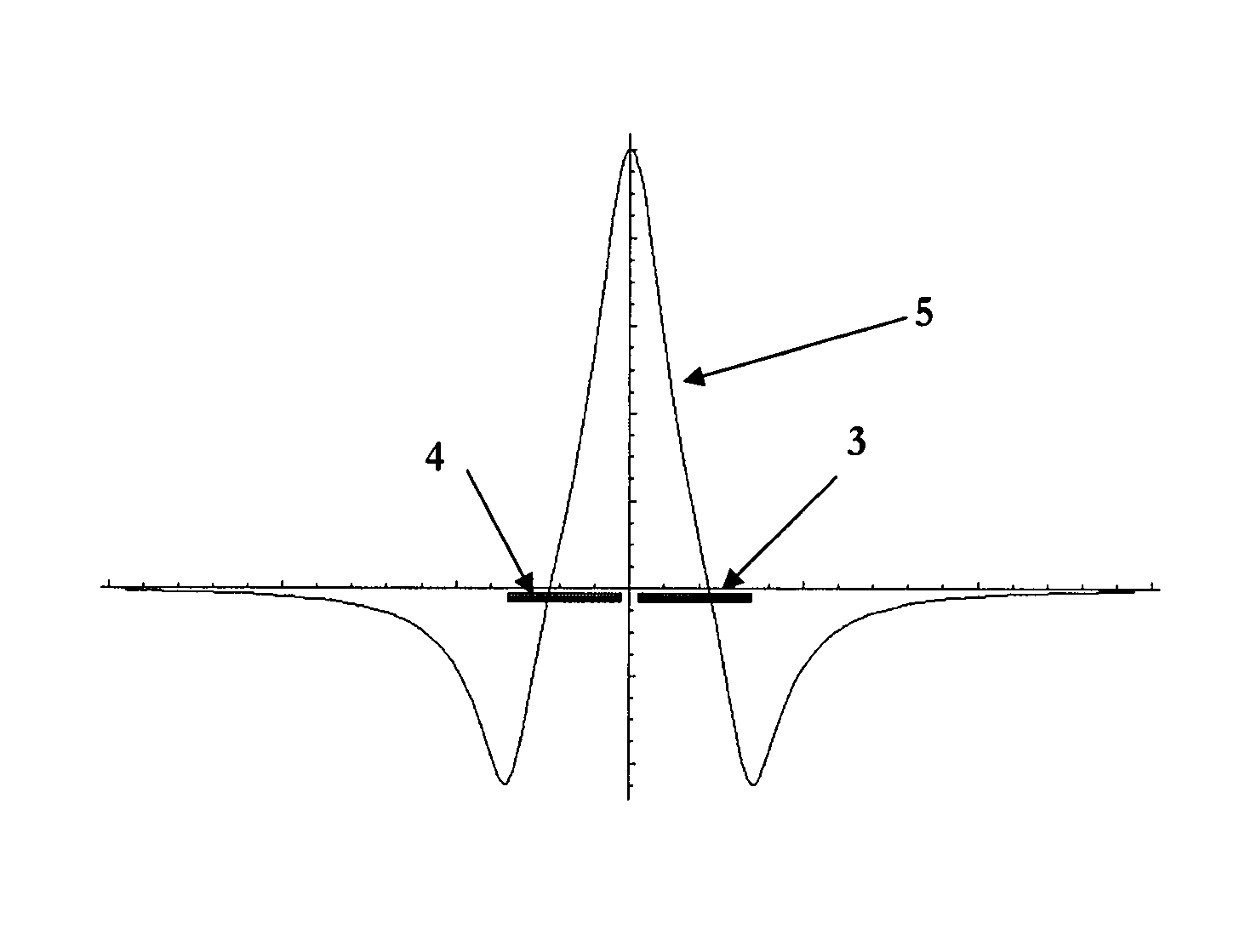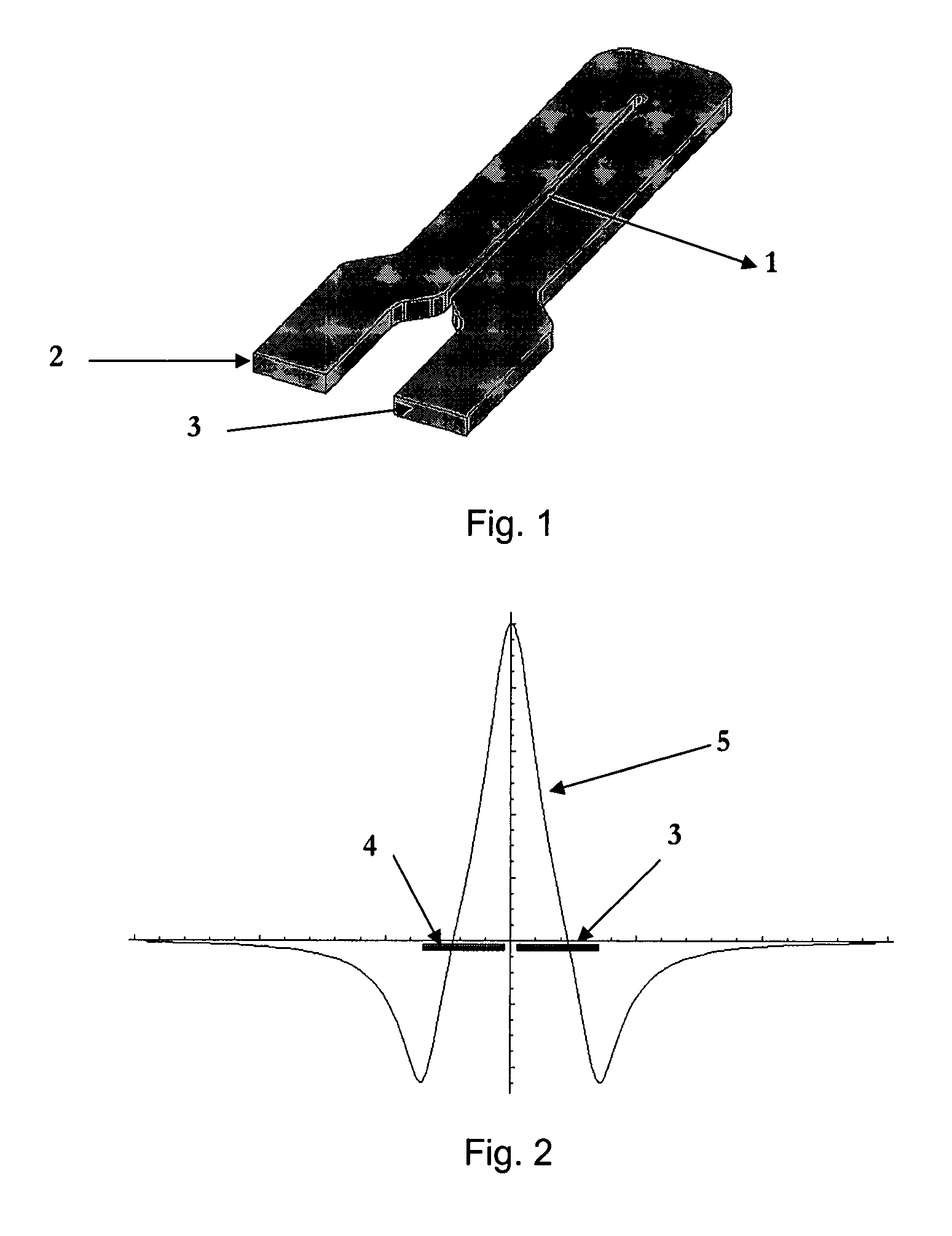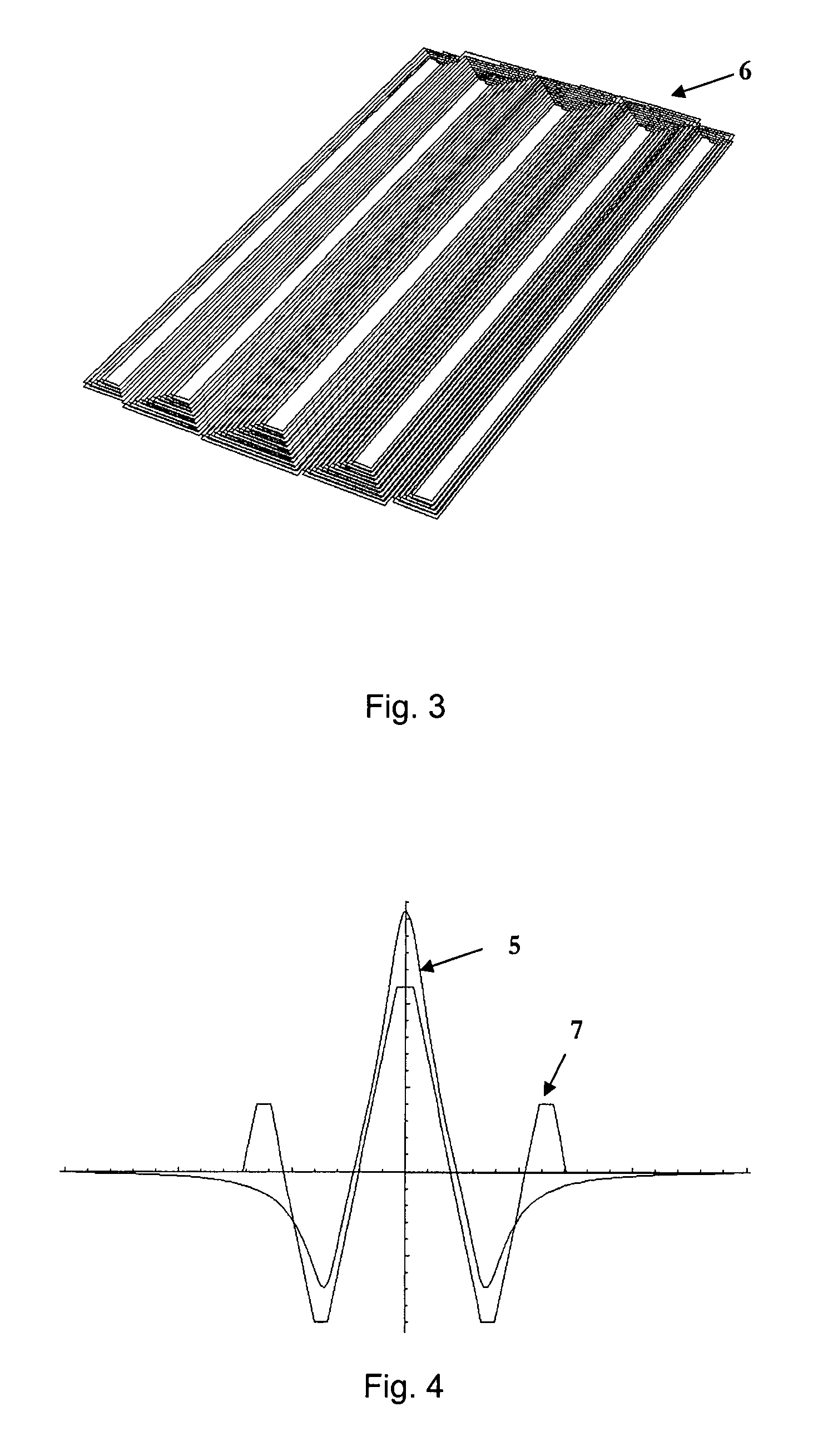Current sensor
a current sensor and current technology, applied in the field of electric current sensing, can solve the problems of system inability to achieve good isolation between channels, none of the known solutions can meet all the requirements, etc., and achieve the effect of maintaining the immunity to uniform and gradient magnetic fields and improving the immunity to fields produced
- Summary
- Abstract
- Description
- Claims
- Application Information
AI Technical Summary
Benefits of technology
Problems solved by technology
Method used
Image
Examples
Embodiment Construction
[0050]Terminal-based polyphase electricity meters typically have three or four adjacent pairs of terminals for connection to the current circuits. These are generally arranged as equally-spaced terminals along the bottom edge of the meter, with a typical terminal pitch of 12-15 mm. Within each pair, the left-hand terminal generally connects to the line (source) and the right hand terminal connects to the load, for a particular phase. In a three-phase system, the current circuits for each phase will be adjacent to each other, and additionally a fourth pair of terminals may be present for the neutral circuit.
[0051]An appropriate conductor to carry the current to be measured is a hairpin shape, shown in FIG. 1. The two ends of the bus bar 2 and 3 are spaced according to the geometry of the terminals of an IEC (International Electrotechnical Commission) three phase electricity meter, where 2 is the source of the current and 3 is the load. FIG. 2 shows the magnetic field perpendicular to...
PUM
 Login to View More
Login to View More Abstract
Description
Claims
Application Information
 Login to View More
Login to View More - R&D
- Intellectual Property
- Life Sciences
- Materials
- Tech Scout
- Unparalleled Data Quality
- Higher Quality Content
- 60% Fewer Hallucinations
Browse by: Latest US Patents, China's latest patents, Technical Efficacy Thesaurus, Application Domain, Technology Topic, Popular Technical Reports.
© 2025 PatSnap. All rights reserved.Legal|Privacy policy|Modern Slavery Act Transparency Statement|Sitemap|About US| Contact US: help@patsnap.com



